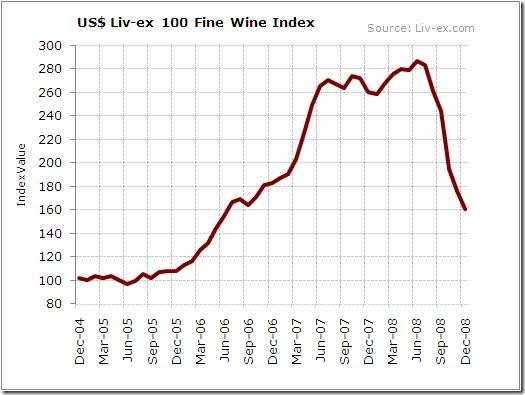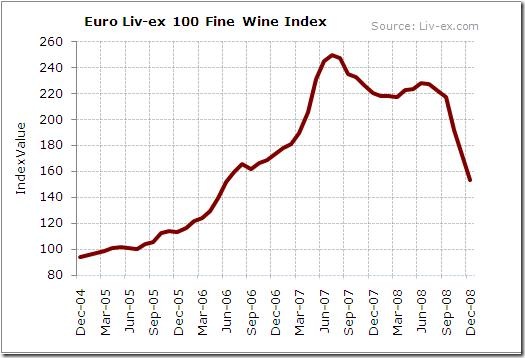The effect of currency fluctuations on wine prices is a topic we have previously looked at in some depth – see both a previous blog post and the June 2008 Liv-ex Market Report.
The extreme exchange rate volatility we have witnessed in recent months, however, certainly makes another look at the subject worthwhile.
The value of sterling has taken a heavy hit since last August, particularly against the euro and US dollar. To illustrate the impact of this on wine prices we converted the Liv-ex 100 (priced in sterling) into both currencies, using the exchange rate on the last trading day of each month. As you can see below, when you add the downturn in wine prices to the weakness of sterling, the effect is dramatic.
So why do we price the Liv-ex 100 Fine Wine Index in sterling? As we stated in the Liv-ex Market Report mentioned earlier:
"Obviously fine wine is mostly released onto the primary market in euros, but with the majority of end consumers paying either pounds or dollars (or in emerging markets, currencies linked to the dollar). It seems that the euro price quickly loses its relevance in the secondary market.
It may change, of course, but we suspect that because London remains the global hub for the secondary market in fine wines, global trade prices are still benchmarked against the UK market. As such, sterling remains the best base currency for the Liv-ex 100 Fine Wine Index."
For those currently blessed with currencies others than sterling, wines sourced from the UK are looking extremely cheap. Prices for selected first growths and other top wines are perhaps the lowest they have been in two years if you are paying in dollars or euros. With sterling perhaps starting to turn – and the early trend in 2009 showing signs of a modest price recovery for some wines – the current situation might not last much longer.







